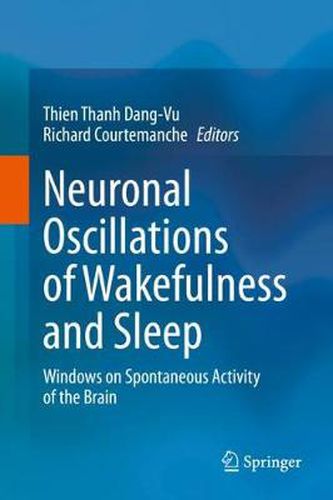Readings Newsletter
Become a Readings Member to make your shopping experience even easier.
Sign in or sign up for free!
You’re not far away from qualifying for FREE standard shipping within Australia
You’ve qualified for FREE standard shipping within Australia
The cart is loading…






This title is printed to order. This book may have been self-published. If so, we cannot guarantee the quality of the content. In the main most books will have gone through the editing process however some may not. We therefore suggest that you be aware of this before ordering this book. If in doubt check either the author or publisher’s details as we are unable to accept any returns unless they are faulty. Please contact us if you have any questions.
The purpose of this work is to review recent findings highlighting the mechanisms and functions of the neuronal oscillations that structure brain activity across the sleep-wake cycle. An increasing number of studies conducted in humans and animals, and using a variety of techniques ranging from intracellular recording to functional neuroimaging, has provided important insight into the mechanisms and functional properties of these brain rhythms.
Studies of these rhythms are fundamental not only for basic neuroscience, but also for clinical neuroscience. At the basic science level, neuronal oscillations shape the interactions between different areas of the brain and profoundly impact neural responses to the environment, thereby mediating the processing of information in the brain. At the clinical level, brain oscillations are affected in numerous neurological conditions and might provide useful biomarkers that inform about patients’ evolution and vulnerability.
During sleep, these brain rhythms could provide functional support to internal states that govern the basic maintenance of local circuit and systemic interactions. During wake, the rhythmicity of cortical and subcortical circuits have been linked with sensory processing, cognitive operations, and preparation for action. This book will attempt to link together these sleep and wake functional roles at the level of neuroimaging and electroencephalographic measures, local field potentials, and even at the cellular level.
$9.00 standard shipping within Australia
FREE standard shipping within Australia for orders over $100.00
Express & International shipping calculated at checkout
This title is printed to order. This book may have been self-published. If so, we cannot guarantee the quality of the content. In the main most books will have gone through the editing process however some may not. We therefore suggest that you be aware of this before ordering this book. If in doubt check either the author or publisher’s details as we are unable to accept any returns unless they are faulty. Please contact us if you have any questions.
The purpose of this work is to review recent findings highlighting the mechanisms and functions of the neuronal oscillations that structure brain activity across the sleep-wake cycle. An increasing number of studies conducted in humans and animals, and using a variety of techniques ranging from intracellular recording to functional neuroimaging, has provided important insight into the mechanisms and functional properties of these brain rhythms.
Studies of these rhythms are fundamental not only for basic neuroscience, but also for clinical neuroscience. At the basic science level, neuronal oscillations shape the interactions between different areas of the brain and profoundly impact neural responses to the environment, thereby mediating the processing of information in the brain. At the clinical level, brain oscillations are affected in numerous neurological conditions and might provide useful biomarkers that inform about patients’ evolution and vulnerability.
During sleep, these brain rhythms could provide functional support to internal states that govern the basic maintenance of local circuit and systemic interactions. During wake, the rhythmicity of cortical and subcortical circuits have been linked with sensory processing, cognitive operations, and preparation for action. This book will attempt to link together these sleep and wake functional roles at the level of neuroimaging and electroencephalographic measures, local field potentials, and even at the cellular level.